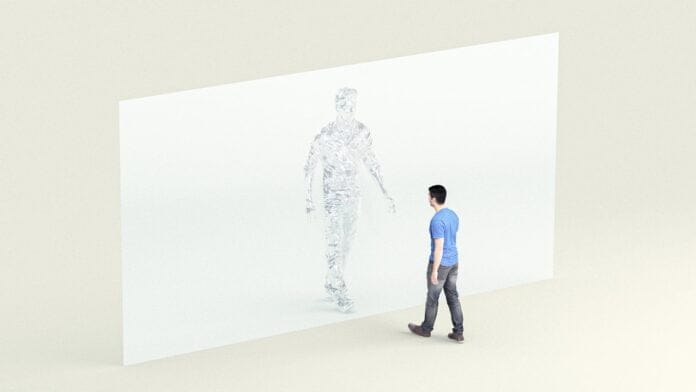In May, I was confronted with a robot version of my writer self. It was made, at my request, by a Silicon Valley startup called Writer, which specializes in building artificial-intelligence tools that produce content in the voice of a particular brand or institution. In my case, it was meant to replicate my personal writing voice. Whereas a model like OpenAI’s ChatGPT is “trained” on millions of words from across the Internet, Robot Kyle runs on Writer’s bespoke model with an extra layer of training, based on some hundred and fifty thousand words of my writing alone. Writer’s pitch is that I, Human Kyle, can use Robot Kyle to generate text in a style that sounds like mine, at a speed that I could only dream of. Writer’s co-founder and chief technology officer, Waseem Alshikh, recently told me that the company’s goal is to use A.I. to “scale content and scale language.” For more than a month now, I have been experimenting with my literary automaton to see how well it accomplishes this task. Or, as Robot Kyle put it when I asked him to comment on the possibility of replacing me: “How could a machine generate the insights, observations, and unique perspectives that I provide as a human?”
Writer is one of several new startups that are attempting to apply emerging A.I. technology to the onerous task of writing. Like many technological innovations, writing robots are meant to create efficiency, particularly for businesses that have to produce large amounts of iterative text. Writer has relationships with companies such as the consulting firm Accenture, the technology company Intuit, and the lingerie brand Victoria’s Secret; commissions for customized models run in the seven figures. (Mine was created as an experiment, free of charge, without some of the intensive features that a corporation’s version would include.) With the help of Writer’s tools, the company hopes, a smaller number of human writers assisted by machines will accomplish the work of many, cutting down costs and increasing productivity in the composition of everything from product descriptions and tweets to C.E.O. messages, investors’ memos, and blog-post headlines. In a March report, Goldman Sachs concluded that three hundred million full-time jobs worldwide are vulnerable to this form of A.I. automation, the majority of them desk jobs. Alshikh speaks of the service as a kind of assembly line for language. “We had the Industrial Revolution; now we have this,” he said.
The looming presence of my personal A.I. model has indeed left me feeling a bit like an artisanal carpenter facing down a factory-floor buzz saw. Should I embrace being replaced and proactively automate my own job before someone else does? Could Robot Kyle help me write better, cleaner, faster? It seemed to think so. When I asked it to describe the long-term effects of machine-generated writing, Robot Kyle wrote, “Writers should not fear AI, but rather embrace it as a tool that can facilitate their craft, driving creativity and innovation instead of replacing it.” What, exactly, does Writer mean by the label “writer”? Our digitized world runs on filler text: avalanches of words and phrases written to optimize Web sites for search engines, to use as tags on social-media posts, and to employ in marketing newsletters that spam in-boxes. May Habib, the C.E.O. and the other co-founder of Writer, told me that the platform’s tools will automate the writing of “summaries, metadata, ads, distribution copy—all the stuff you spend time doing.” Victoria’s Secret, for instance, is using Writer to automate product copy for its underwear and swimsuits, but Writer promises something more sophisticated than mass-produced marketplace listings or formulaic e-mail blasts. Its core product, as Habib put it, is “automated insight extraction”—another way of describing the task of thinking, which is arguably the purpose of writing in the first place. As Joan Didion wrote, in 1976, “I write entirely to find out what I’m thinking.” A.I. programs such as Writer aim to supplant that process.
In 1984, Steve Jobs famously described the computer as a “bicycle for the mind.” The experience of using Writer is something like riding an electric bike: step on the pedal and you’ll go much faster than the gears of the unassisted human mind could. The program’s interface features a prompt window on the left and a text box on the right. With a one-sentence prompt—let’s call it the seed of a thought—Writer can produce paragraphs of text in an instant. If you want more on the same subject, simply press the Command and Return keys simultaneously and another few sentences appear. Yet, as with any large language model, Writer cannot guarantee that the results will be factual or sensical. Writing without the aid of a generative machine might be frustrating, even excruciating, but it does encourage productive logic. If writing is thinking, ordering one’s ideas, generating text with A.I. may be a way to avoid thinking. What is writing without thinking? Maybe it is the definition of that deadening euphemism: content. As I tried to incorporate Writer into my writing process, I felt a little like a gambler pulling a slot-machine lever over and over, in hope of finding the lucky combination of phrases that communicated something like what I wanted to say. At one point, I asked Robot Kyle to write the beginning of this article. It came up with this:
This draft sounded like an undergrad term paper, but with the kernel of an intriguing argument: technology promises leisure but often fails to deliver it. I edited the prompt to request a new lead with a more exciting, literary tone that captures the emotional experience of encountering oneself in robot form. This time, the A.I. concocted a sci-fi narrative:









